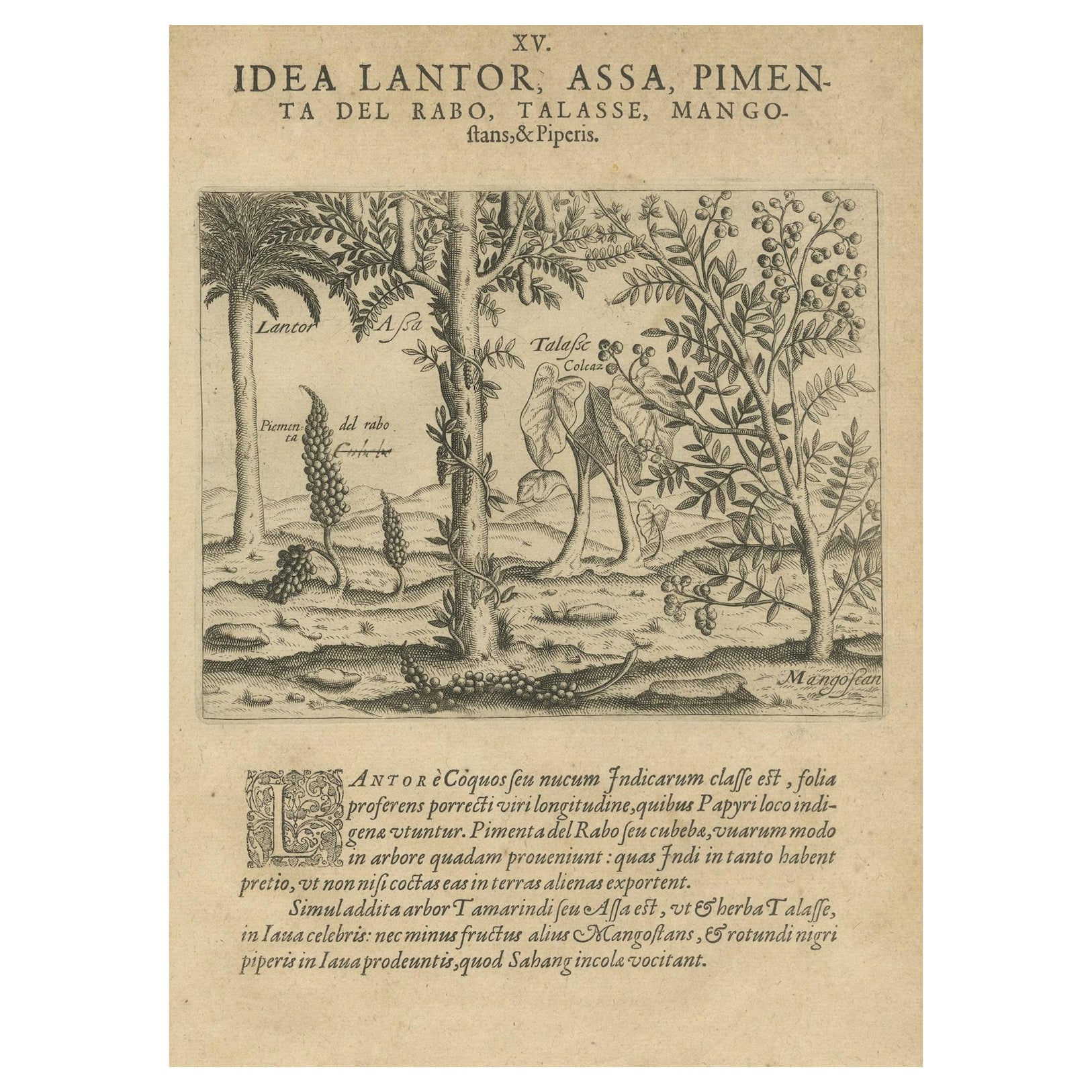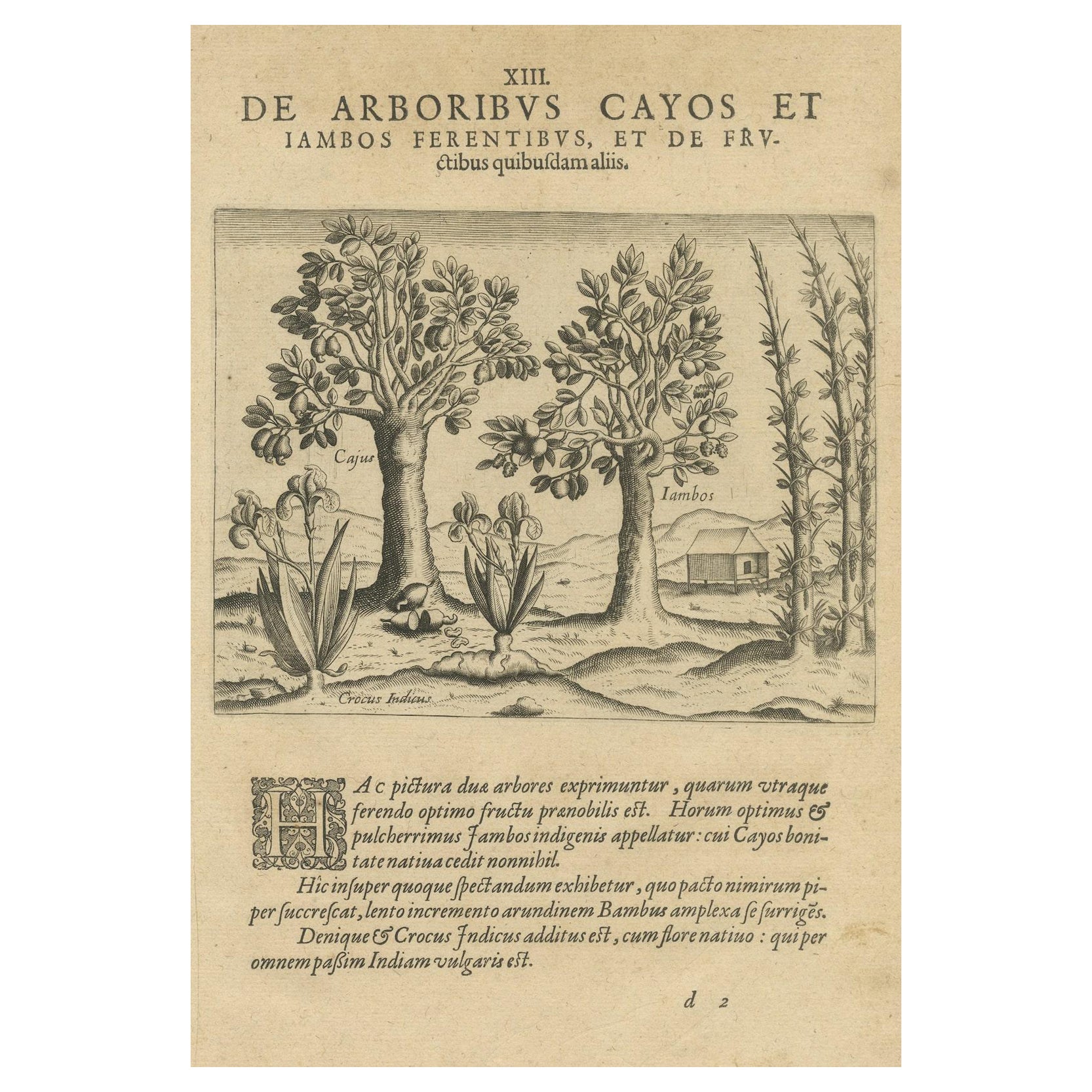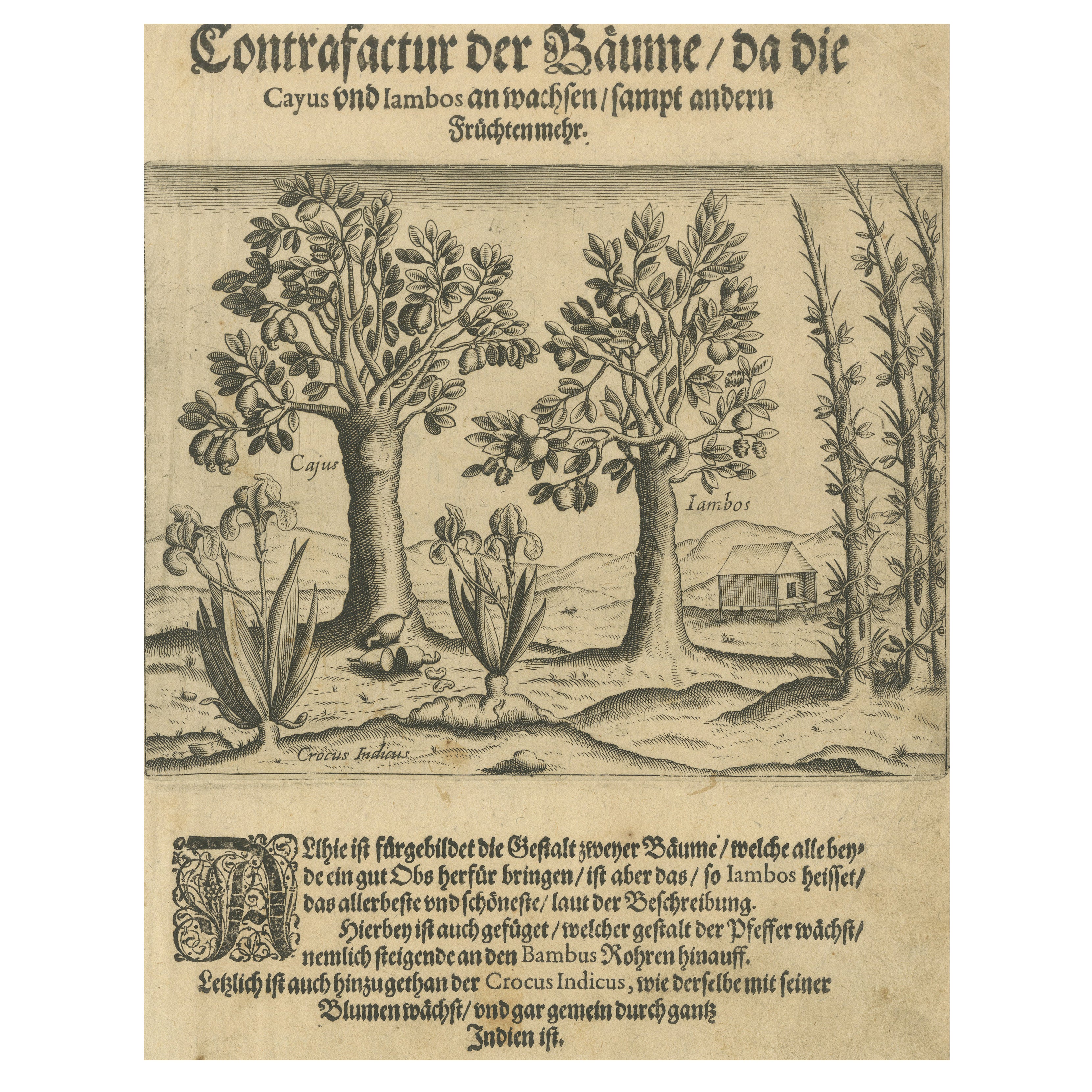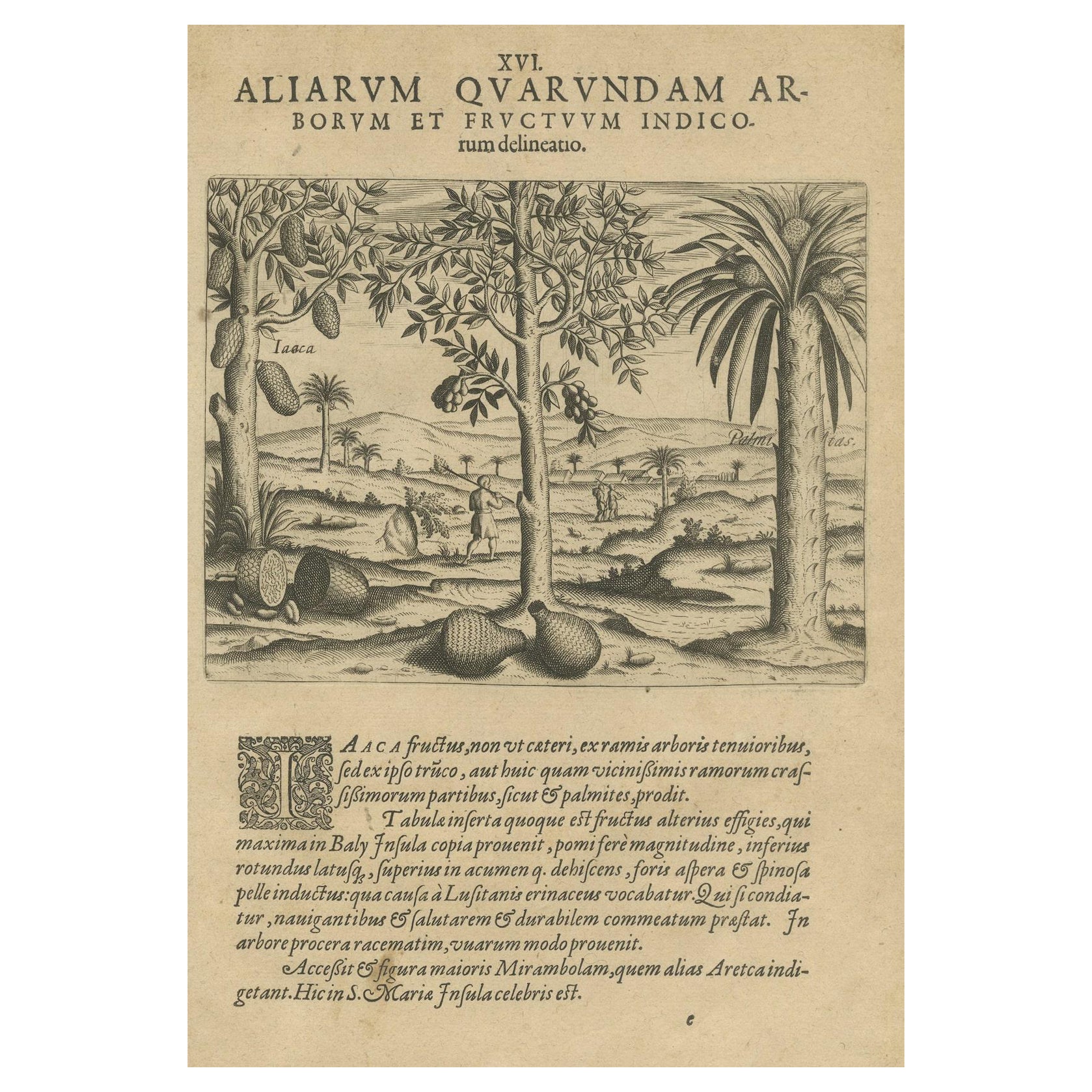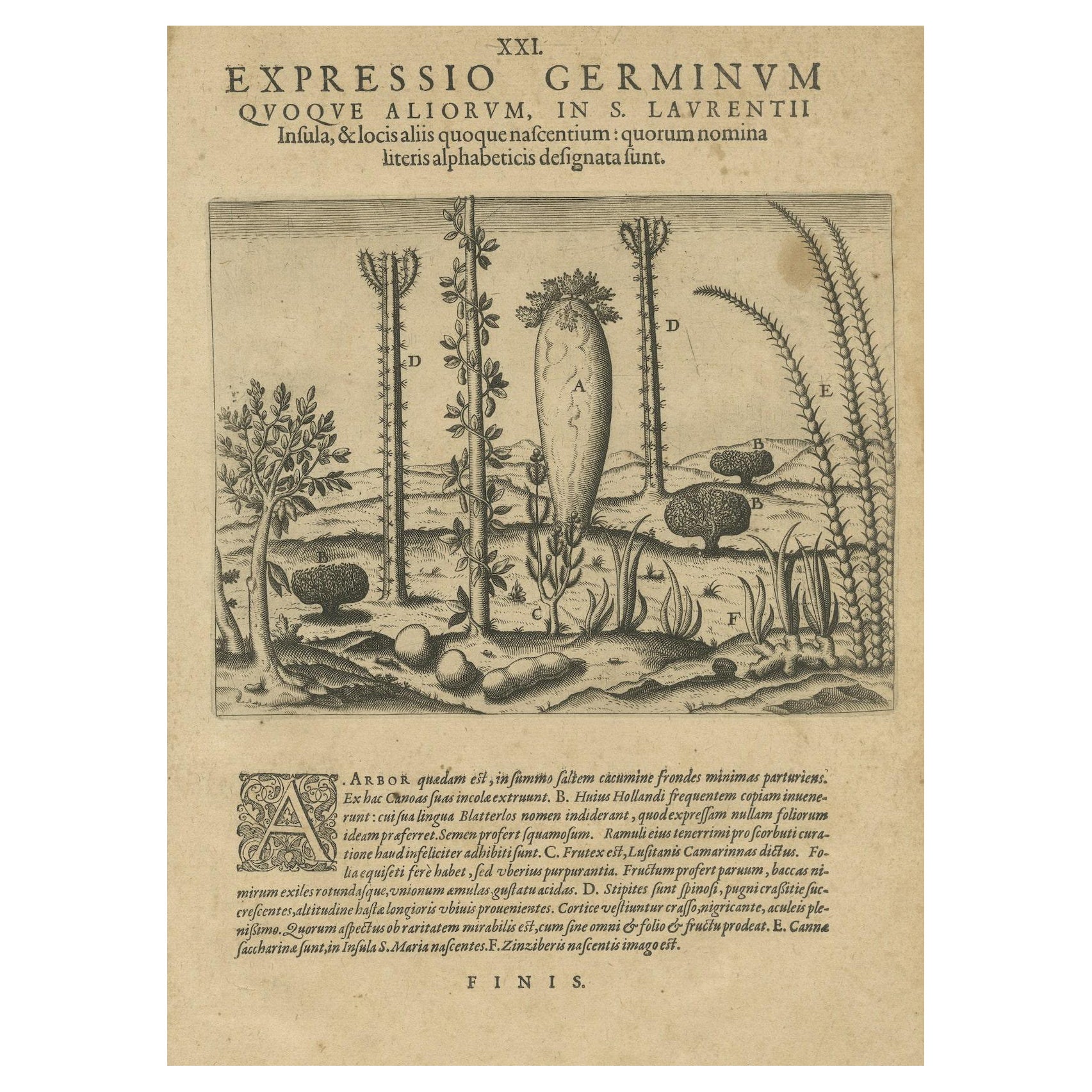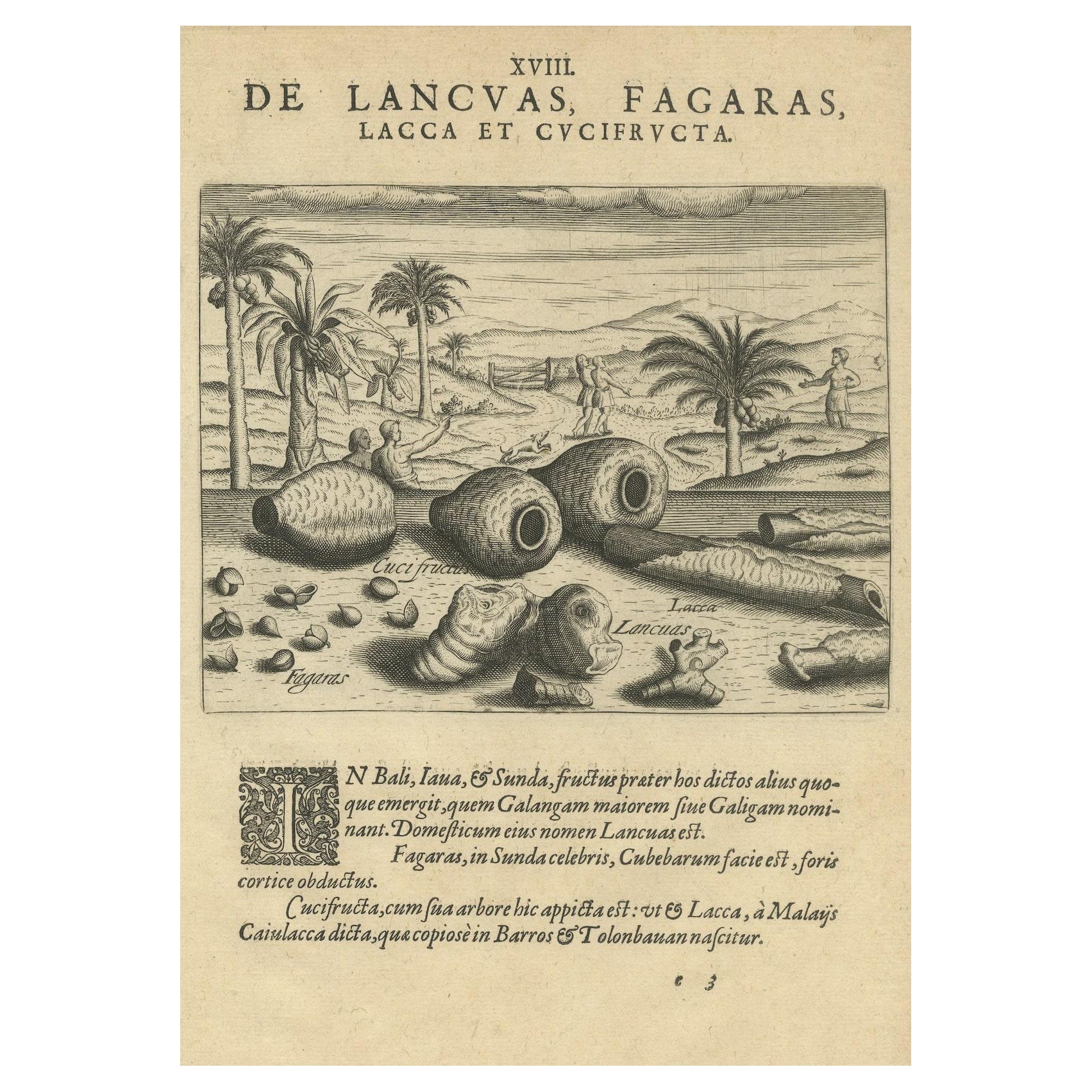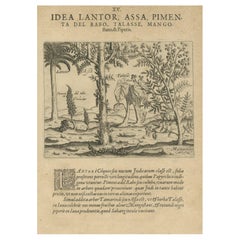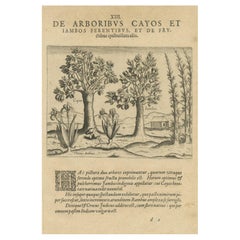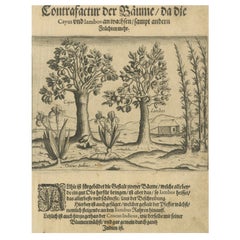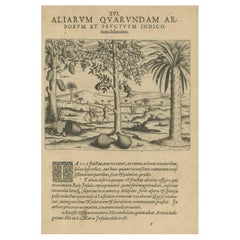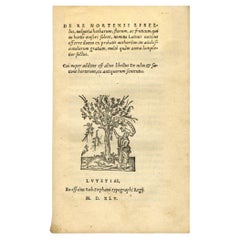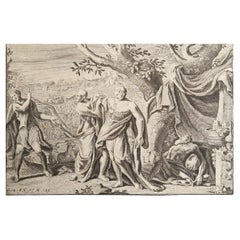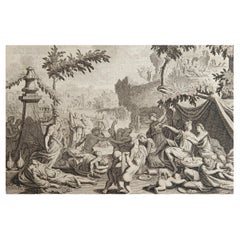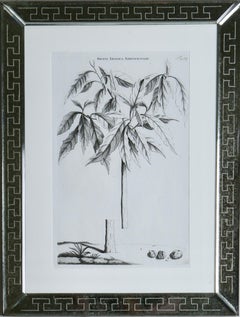Items Similar to Spices of the Tropics: Cinnamon and Cassia in De Bry's 1601 Illustration
Want more images or videos?
Request additional images or videos from the seller
1 of 7
Spices of the Tropics: Cinnamon and Cassia in De Bry's 1601 Illustration
$459.12
$573.9020% Off
£339.88
£424.8620% Off
€384
€48020% Off
CA$635.30
CA$794.1320% Off
A$700.41
A$875.5120% Off
CHF 366.43
CHF 458.0420% Off
MX$8,592.68
MX$10,740.8620% Off
NOK 4,612.63
NOK 5,765.7820% Off
SEK 4,313.54
SEK 5,391.9220% Off
DKK 2,925.08
DKK 3,656.3520% Off
About the Item
Title: "Spices of the Tropics: Cinnamon and Cassia in De Bry's 1601 Illustration"
Description: This 1601 engraving by Theodore de Bry offers a detailed look at the spice-bearing trees of the East Indies, specifically focusing on varieties of Cinnamon and Cassia. The illustration provides a view of the trees with their distinct leaves and the valuable bark that was, and still is, a staple in both culinary and medicinal practices worldwide. On the left, the Cassia tree is depicted with its characteristic elongated leaves, while the center and right of the engraving show the Cinnamon tree, renowned for its aromatic bark. The image elegantly captures the essence of these spices, which played a significant role in the global trade routes of the time and were a driving force behind many of the explorations of the era.
The background is filled with gentle coastal scenes, possibly illustrating the native habitats of these trees along the shores of the Indian Ocean. Small boats can be seen in the distance, hinting at the spice trade that connected distant lands. De Bry's engravings were not only works of art but also visual records that contributed to the spread of knowledge about the natural riches of newly explored territories.
Translation of the Latin text:
"The Arcapuli, moving on its own to the island of Sunda, produces fruit of extraordinary size. The Canela de mato has an abundance similar to the Cinnamon in the river Jamna, which has no comparison with any other singular thing. However, its bark is slightly thinner and less pungent. The Cassia tree is abundantly found in Sunda with very tall trees and is widely known; as can be seen in the depiction as if you were looking at a lush table."
The engraving is a page from Part IV of de Bry's "Petits Voyages," which narrates significant expeditions to the East Indies, including those led by Jan Juygen van Linschoten and Cornelis de Houtman between 1595-97, as well as the journey by Jacob van Neck and Wybrandt van Warwijck in 1598-99. These works were not merely artistic endeavors but also ethnographic records, showcasing indigenous peoples, fauna, flora, and the diverse riches of lands like India, Madagascar, and the East Indies.
Though Theodore de Bry began this ambitious project, it was continued posthumously by his family and later completed by his son-in-law, Matthaus Merian, in 1644. This particular engraving, rich in detail and drama, offers a window into the perilous and wondrous experiences of early explorers, and the ways in which these moments were captured and communicated to a European audience hungry for knowledge of the wider world.
- Dimensions:Height: 11.82 in (30 cm)Width: 7.88 in (20 cm)Depth: 0 in (0.02 mm)
- Materials and Techniques:Paper,Engraved
- Period:Early 17th Century
- Date of Manufacture:1601
- Condition:The condition of the print is good, considering its age of over 400 years. Light brownish toning and foxing and some soiling due to handling, mainly around the edges. Please study this image carefully.
- Seller Location:Langweer, NL
- Reference Number:Seller: BG-13596-191stDibs: LU3054337756412
About the Seller
5.0
Recognized Seller
These prestigious sellers are industry leaders and represent the highest echelon for item quality and design.
Platinum Seller
Premium sellers with a 4.7+ rating and 24-hour response times
Established in 2009
1stDibs seller since 2017
2,609 sales on 1stDibs
Typical response time: <1 hour
- ShippingRetrieving quote...Shipping from: Langweer, Netherlands
- Return Policy
Authenticity Guarantee
In the unlikely event there’s an issue with an item’s authenticity, contact us within 1 year for a full refund. DetailsMoney-Back Guarantee
If your item is not as described, is damaged in transit, or does not arrive, contact us within 7 days for a full refund. Details24-Hour Cancellation
You have a 24-hour grace period in which to reconsider your purchase, with no questions asked.Vetted Professional Sellers
Our world-class sellers must adhere to strict standards for service and quality, maintaining the integrity of our listings.Price-Match Guarantee
If you find that a seller listed the same item for a lower price elsewhere, we’ll match it.Trusted Global Delivery
Our best-in-class carrier network provides specialized shipping options worldwide, including custom delivery.More From This Seller
View AllVerdant Wonders: Exotic Trees and Spices of India in De Bry's 1601 Illustration
Located in Langweer, NL
Title: "Verdant Wonders: Exotic Trees and Spices of India in De Bry's 1601 Illustration"
Description: This striking 1601 engraving by Theodore de Bry, titled "IDEA LANTOR, ASSA, PIM...
Category
Antique Early 17th Century Prints
Materials
Paper
$526 Sale Price
20% Off
Exotic Flora of the Indies: The Cajus and Jambos Trees Copper Engraved in 1601
Located in Langweer, NL
Title: "Exotic Flora of the Indies: The Cajus and Jambos Trees in De Bry's 1601 Engraving"
Description: This detailed engraving by Theodore de Bry, dating back to 1601, beautifully illustrates two tropical trees, the Cajus and the Jambos, both renowned for their delectable fruits in the regions of India. The Cajus tree, likely referring to what is known today as the cashew, is depicted with its distinctive fruit that dangles below the swollen pedicel, commonly called the cashew apple. The Jambos tree, with its lush, dense foliage and abundant fruiting, could be related to the rose apple, known for its fragrant, rose-scented fruit.
Included in the scene is a depiction of the Indian Crocus, adding a touch of the diverse understory vegetation of the tropical climate. The image conveys a peaceful coexistence with nature, as indicated by a modest dwelling in the background, suggesting the integration of these trees into the daily lives of the local inhabitants for both nourishment and commerce.
The text is in Latin, and here is the English translation:
"In this picture, two trees are shown, each of which bears the most excellent and noble fruit. The best of these is called the Jambos, native to the region, which the inhabitants call Cayos. On this tree, nothing of note is bestowed.
Moreover, this also represents a marvelous spectacle, in which the slow-growing cane bamboo surrounds itself. Finally, the Indian Crocus has been added, which blooms with its native flower; which is widespread throughout all of India."
De Bry's engravings were pivotal in bringing the natural wealth of the New World and the East Indies to the European imagination. His work not only served as an artistic endeavor but also as an educational tool that fed the European appetite for knowledge about the vast diversity of the world's flora and fauna. This engraving, with its precision and attention to botanical detail, remains a significant historical record of the natural world as seen through the lens of the early modern European...
Category
Antique Early 17th Century Dutch Prints
Materials
Paper
Cashew and Rose Apple Trees with Pepper and Crocus Indicus – de Bry, 1600
Located in Langweer, NL
Cashew and Rose Apple Trees with Pepper and Crocus Indicus – de Bry, 1600
Exotic early engraving from Johann and Israel de Bry’s illustrated edition of Jan Huygen van Linschoten’s t...
Category
Antique Early 1600s Dutch Prints
Materials
Paper
Tropical Abundance: The Jackfruit and Palm Trees in De Bry's 1601 Engraving
Located in Langweer, NL
"Tropical Abundance: The Jackfruit and Palm Trees in De Bry's 1601 Engraving"
Description: This remarkable 1601 engraving by Theodore de Bry illustrates the lush vegetation of India...
Category
Antique Early 17th Century Prints
Materials
Paper
$526 Sale Price
20% Off
Botanical Illustration of Saint Lawrence's (Madagascar) Seeds and Plants, 1601
Located in Langweer, NL
"Botanical Illustration of Saint Lawrence's Seeds and Plants by De Bry, 1601"
Description: This engraving from Theodore de Bry's collection, produced in 1601, features a botanical study of various seeds and plants native to the island of Saint Lawrence, also known as Madagascar. Each plant is meticulously rendered with Latin letters corresponding to a legend that identifies them. This careful study was part of De Bry’s extensive work to document and illustrate the flora and fauna encountered by European explorers during their voyages to exotic lands.
The illustration captures the diverse plant life from the island, from the bulbous shapes of the roots in the foreground to the towering forms of the trees in the background. The detail in the image reflects the European fascination with new and foreign natural history, a subject that was growing in popularity and significance during the Age of Exploration. De Bry's works served not only as scientific records but also as means to captivate and educate his contemporaries about the wonders of the natural world.
Translation of the Latin text:
"There is a certain tree, its summit dividing into the smallest of branches. From this, the Chaonas nuts are collected. B. The House of...
Category
Antique Early 17th Century Prints
Materials
Paper
$487 Sale Price
20% Off
Treasures of the Tropics: Lac, Lancas, and Fagaras in De Bry's 1601 Engraving
Located in Langweer, NL
Title: "Treasures of the Tropics: Lac, Lancas, and Fagaras in De Bry's 1601 Engraving"
Description: In this detailed 1601 engraving by Theodore de Bry, a variety of tropical produce...
Category
Antique Early 17th Century Prints
Materials
Paper
$526 Sale Price
20% Off
You May Also Like
De re hortensi libellus, a 16th Century Children's Gardening Book
Located in Middletown, NY
Estienne, Charles
De re hortensi libellus (A small book on gardening); . . . vulgaria herborum, florum ac fruticum qui in hortis conseri solent nomina latinis vocibus efferre docens ...
Category
Antique 16th Century French Books
Materials
Gold Leaf
Original Antique Print After Jan Luyken, Amsterdam, Genesis IX, 1724
Located in St Annes, Lancashire
Wonderful copper-plate engraving after Jan Luyken
Published by Marten Schagen, Amsterdam. 1724
Text on verso
The measurement given is the paper size.
Category
Antique 1720s Dutch Renaissance Prints
Materials
Paper
Original Antique Print after Jan Luyken, Amsterdam, Genesis VI, 1724
Located in St Annes, Lancashire
Wonderful copper-plate engraving after Jan Luyken
Published by Marten Schagen, Amsterdam. 1724
Text on verso
The measurement given is the paper size.
Category
Antique 1720s Dutch Renaissance Prints
Materials
Paper
Jan & Caspar Commelin: 17th Century Botanical Engravings, 1st Edition
By Jan & Caspar Commelin
Located in Richmond, GB
""Horti Medici Amstelodamensis Rariorum"" (Rarities of the Amsterdam Physic Garden),
1st edition, 1697 - 1701. ( Ref: Dunthorne: 81)
Jan Commelin (1629-1692) was Director of the Am...
Category
17th Century Paintings
Materials
Silver
Original Antique Print After Jan Luyken, Amsterdam, Genesis XXXI, 1724
Located in St Annes, Lancashire
Wonderful copper-plate engraving after Jan Luyken
Published by Marten Schagen, Amsterdam. 1724
Text on verso
The measurement given is the paper size.
Category
Antique 1720s Dutch Renaissance Prints
Materials
Paper
Original Antique Print after Jan Luyken, Amsterdam, Genesis IV, 1724
Located in St Annes, Lancashire
Wonderful copper-plate engraving after Jan Luyken
Published by Marten Schagen, Amsterdam. 1724
Text on verso
The measurement given is the paper size.
Category
Antique 1720s Dutch Renaissance Prints
Materials
Paper
More Ways To Browse
Antique Spices
Wiener Werkstatte Vase
Wood Carved Dog Head
Wood Slat Cabinet
Wood Snake Sculpture
Wooden Carved Trees
Wooden Rocking Horse
Wooden Wagon
Wrought Iron Balconies
Wrought Iron Balcony
Yellow Painted Chest
10 Drawer Dresser
17Th Century Casket
17th Century Italian Cassone
17th Century Chinese Incense Burner
18th Century Reproduction Furniture
18k Gold Snuff Box
18th Century Jasperware
